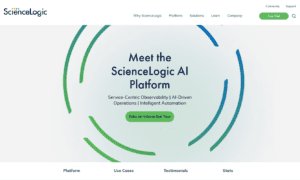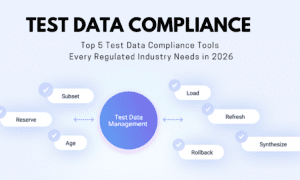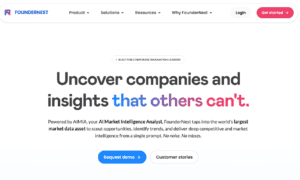The financial services industry is undergoing a profound metamorphosis, driven by the exponential growth of data and the increasingly sophisticated capabilities of artificial intelligence. Institutions globally are recognizing that their ability to navigate complex market dynamics, manage inherent risks, and deliver superior customer experiences hinges on the effective deployment of data-driven strategies.
The scale of this shift is underscored by market projections indicating the global AI in finance market, valued at USD 38.36 billion in 2024, is anticipated to surge to USD 190.33 billion by 2030. This rapid expansion reflects significant investment and a growing reliance on these transformative technologies, setting a new paradigm for operational excellence and strategic foresight. Amidst this evolution, leaders who can adeptly bridge the chasm between advanced analytics and tangible business outcomes are paramount.
Pablo Gomez Tena stands as such a leader, bringing twelve years of dedicated experience in harnessing data and critical thinking to resolve intricate challenges, predominantly within the financial services arena, with a particular emphasis on consumer banking. His academic journey, which uniquely melds a foundational mathematics undergraduate degree with an MBA specializing in Technology Strategy and Product Management, has provided a distinctive lens through which to approach modern financial complexities.
This combination has not only equipped him with a deep understanding of the quantitative underpinnings of financial models and AI algorithms but also with the strategic acumen to steer their application towards impactful business solutions. This dual proficiency is increasingly critical as financial institutions seek to integrate AI not merely as a technical tool, but as a core component of their strategic architecture.
Consequently, Pablo has emerged as a pivotal figure within his organization, spearheading the strategic development and deployment of AI and demonstrating a nuanced skill in embedding and amplifying its capabilities within the workplace. Within the demanding and heavily regulated environment of financial services, Pablo’s work in managing substantial credit portfolios, effectively reducing losses, and consistently delivering data-driven return on investment reinforces his profound domain expertise.
His leadership in AI deployment is particularly noteworthy, as innovating in such a regulated space requires not only technical prowess but also a sophisticated understanding of ethical considerations, data governance, model explainability, and complex compliance mandates. The EU AI Act, for example, now designates many financial AI applications as “high risk,” demanding transparency and robust oversight.
Pablo’s success in this context, therefore, points to an ability to drive innovation responsibly, adeptly balancing technological advancement with rigorous risk management and unwavering compliance adherence, establishing a benchmark for ethical AI deployment in a sector where trust and security are paramount.
The mathematical genesis: Charting a course in financial data analytics
The path that led Pablo to apply his analytical acumen to the financial services sector was shaped by both familial influence and a profound intellectual curiosity. “Coming from a family of economists and bankers, I was always drawn to the financial services sector, but my ultimate involvement in the sector was not the most straightforward path,” Pablo recounts. “Instead of majoring in business, finance, or economics, I chose mathematics.”
“Drawn to numbers and the structure that comes with solving problems through logic and proof, mathematics gave me the skills to solve difficult problems using logic, science, and processes,” he continues. This decision to pursue mathematics provided him with a distinct advantage: “Studying mathematics gave me the ability to learn about complex machine learning algorithms that often underpin the financial system.”
The financial sector, with its inherent complexities and high-stakes decision-making, presented an irresistible challenge. “Finance presents rich, high-stakes problems that are naturally well-suited to data-driven thinking—from risk modeling and forecasting to customer segmentation and fraud detection,” Pablo explains. “With my background in mathematics and analytics, I was drawn to the challenge of making sense of large, dynamic datasets and using that insight to inform critical decisions.”
“It felt like the perfect environment to apply both technical rigor and strategic thinking,” he adds. The industry’s increasing adoption of automation, advanced data analytics, and artificial intelligence has indeed transformed traditional approaches to risk assessment and financial modeling. Investment banks and other financial entities are progressively relying on AI-driven insights to process vast quantities of data, thereby enhancing forecasting accuracy and strategic planning capabilities.
This trajectory suggests that Pablo’s early focus on mathematics, rather than a more conventional finance degree, was a remarkably prescient choice. While perhaps not explicitly intended as such at the outset, this rigorous quantitative grounding provided a more direct and robust pathway to mastering the analytical tools and machine learning techniques that are now fundamentally reshaping the financial landscape. This gave him a distinct advantage over peers who might have needed to acquire these specialized skills later in their careers.
His formative experiences within financial services were instrumental in shaping his holistic approach to problem-solving. He learned firsthand how to balance innovation with risk, how to navigate highly regulated environments, and how to make analytics actionable in a business context. These are competencies that remain central to his current leadership role in AI-driven initiatives.
The early exposure to the intricate dance between technological innovation and stringent risk management, particularly within a highly regulated domain, cultivated a crucial mindset. This pragmatic and responsible approach to technological adoption, honed in the initial stages of his career, has proven invaluable for AI leadership, where ethical considerations and regulatory compliance are as critical as technical sophistication.
Illuminating portfolio risk: A case study in advanced analytics dashboards
One of Pablo’s notable achievements involved the development of an advanced analytics dashboard designed to monitor and forecast credit risk for a substantial $2 billion credit card portfolio. Managing such portfolios is a substantial undertaking, as leading financial institutions frequently handle credit card loan balances that reach into the hundreds of billions of dollars, demonstrating the scale and complexity of these endeavors.
“One high-impact project where deep data analysis drove real value was the development of an advanced analytics dashboard to monitor and forecast credit risk for a $2B credit card portfolio,” Pablo states.
“While we had a robust decision engine powered by a gradient boosting model to assess default risk, the output was binary—approve or decline,” he continues. “This limited visibility into the risk levels within the approved population and left leadership without the clarity needed for mid-term strategic planning.”
Gradient boosting models are recognized for their power in handling complex, non-linear relationships in data and are commonly employed in credit risk forecasting. However, the binary output of the existing system represented a common challenge in operationalizing sophisticated models: the “last-mile” problem of translating complex outputs into actionable strategic intelligence.
To address this gap, Pablo spearheaded an initiative that involved a granular analysis of origination data. He developed a segmentation framework by applying weighted averages and statistical clustering techniques to categorize new accounts into distinct risk tiers. This method went beyond simplistic metrics like credit scores or income levels, offering a more nuanced view of the portfolio’s risk composition.
The impact of this initiative was multifaceted. “What made this particularly impactful was how it empowered non-technical decision-makers to understand exposure more clearly,” Pablo notes. “Credit risk management is fundamentally about understanding and communicating where risk lies.”
“By visualizing the data in a way that was both transparent and easy to interpret, stakeholders outside of analytics and risk could engage with the information confidently,” he adds. This outcome highlights a crucial element of successful data projects: the democratization of insights. Leading enterprises increasingly prioritize data democratization to cultivate a more collaborative and data-literate organizational culture.
By making complex risk data accessible and interpretable to a broader audience, Pablo’s project fostered stronger alignment across teams, supported more informed decisions regarding risk appetite, and ensured the business could make calculated, well-informed moves with the ability to monitor and adjust strategies in real time.
This approach exemplifies a broader industry trend where AI-powered business intelligence dashboards are transforming data visualization and decision-making by providing clear visualizations of risk factors and facilitating better, data-driven decisions. The project was not merely a technical triumph but also a cultural one, significantly enhancing the organization’s ability to leverage data for strategic advantage.
Crafting clarity: Designing business intelligence dashboards for banking stakeholders
Designing effective business intelligence dashboards for banking stakeholders, particularly those requiring real-time insights into dynamic loan portfolios and fluctuating market conditions, demands a meticulous and user-centric approach. Tena’s methodology begins with intensive engagement with the end-users. “When designing business intelligence dashboards for banking stakeholders—especially those monitoring loan portfolios and market conditions in real time—I start by deeply engaging with the end users,” he emphasizes.
“It’s critical to understand their core KPIs, how frequently they need updates, and what visual formats help them interpret data quickly and confidently,” Pablo continues. “These conversations shape everything from the data refresh cadence to layout and filtering logic.” This foundational step of understanding user needs aligns with established BI dashboard design principles and best practices, which stresses the importance of considering the audience and clearly defining the dashboard’s goals and the questions it must answer.
The backend architecture supporting these dashboards is equally critical. Pablo prioritizes the construction of robust and reliable data pipelines. This encompasses extracting data from diverse sources such as APIs, internal databases, and external vendors, establishing automated ingestion processes, and applying data transformations that accurately mirror how analysts would manually prepare the data.
“Accuracy is non-negotiable, so I build in validation steps to catch discrepancies before they reach the user,” he asserts. This unwavering commitment to data integrity is paramount in the financial sector, where decisions based on erroneous data can lead to severe consequences. The cost of poor data quality for organizations averages $12.9 million annually, underscoring the financial implications of data inaccuracies.
Furthermore, clean, error-free data is the bedrock for reliable AI insights and trustworthy BI systems. This meticulous attention to data quality not only ensures technical soundness but also builds essential user trust, a prerequisite for the successful strategic adoption of BI tools in high-stakes financial environments.
Pablo’s approach extends beyond the initial deployment of the dashboard, reflecting a philosophy of continuous improvement and user support. “Once the dashboard is live, I don’t stop there—I run training sessions to help stakeholders use it effectively and follow up to understand how it’s being used versus how it was intended,” he explains. “That feedback loop helps me iterate, improve usability, and ensure the dashboard evolves with their needs.”
This iterative cycle of feedback, training, and enhancement is characteristic of a product management discipline, treating internal data tools as evolving products rather than static technical implementations.
Navigating the regulatory maze: Data innovation in consumer finance
Innovating with data in the consumer finance sector presents a unique set of challenges, primarily due to its heavily regulated nature. The paramount hurdle, as Pablo identifies, is ensuring that any new data models, AI systems, or business intelligence frameworks are not merely technically sophisticated but also fully compliant and explainable to a host of internal and external stakeholders.
“When innovating with data in heavily regulated consumer finance—whether it’s building new data models or rolling out business intelligence frameworks—the biggest challenge is ensuring that these efforts are not just technically impressive, but also fully aligned with risk, compliance, legal, and finance,” he states.
“It’s easy to build a sophisticated model or dashboard, but if it can’t stand up to regulatory scrutiny or isn’t explainable, it won’t move forward,” Pablo adds. This concern is particularly acute with the rise of AI. The growing market for regulatory technology (RegTech) is projected to reach USD 21 billion by 2027, reflecting a compound annual growth rate (CAGR) of nearly 20%, which reflects the industry’s investment in technological solutions to manage these complex compliance demands.
To navigate this intricate landscape, Pablo champions a proactive strategy centered on early and deep engagement with all approval stakeholders, coupled with a meticulous understanding of data lineage, transformation processes, and governance requirements. “Compliance and governance are not afterthoughts—they’re design principles that shape how the solution is built,” he asserts. This approach, where regulatory considerations are embedded into the very fabric of a project from its inception, mirrors a “shift-left” philosophy.
Much like shifting quality assurance earlier in software development, integrating compliance and governance at the design stage minimizes the risk of costly rework or project derailment later due to unforeseen regulatory conflicts. It fosters the development of inherently more robust, trustworthy, and compliant solutions.
This proactive stance is crucial, as financial institutions must maintain a strong understanding of the new consumer financial services landscape to identify and mitigate emerging risks effectively. Data governance best practices for banking and finance, such as establishing clear frameworks and policies, are essential to support this, especially given that a significant percentage of organizations face challenges with compliance audits and data breaches.
The lifecycle of data innovation, in Pablo’s view, extends far beyond deployment. “Equally important is what happens after deployment. Too often, data initiatives lose momentum once they’re live,” he continues. “But in finance, ongoing maintenance and monitoring are non-negotiable.”
Data models can drift over time, business logic evolves, and dashboards must maintain real-time accuracy to remain useful and compliant. Therefore, he advocates for clear ownership structures, robust monitoring processes, and continuous feedback loops to ensure that any data product—be it a model or a BI tool—remains trusted, actionable, and aligned with both company and regulatory standards. This perspective challenges the common project-based mindset, which often sees a defined end to an initiative.
Precision in prediction: Advanced analytics for strategic risk forecasting
The capacity to accurately forecast risk outcomes is a cornerstone of strategic decision-making in financial services. “One impactful example was when I built an advanced analytics dashboard to help monitor and forecast credit risk for a $2B credit card portfolio,” Pablo recounts. “While the existing credit decision engine was powered by a gradient boosting model that predicted default risk, it ultimately produced a binary outcome—approve or decline.” “Leadership, however, needed more granularity: among the approved applicants, how risky were they really?” he adds.
This gap in understanding the nuanced risk distribution within the approved population was a significant impediment to mid-term strategic planning. The use of predictive analytics and machine learning models is increasingly central to transforming credit scoring and risk assessment, moving beyond traditional methods to incorporate a wider array of data and achieve higher accuracy.
Pablo’s solution was to segment newly originated accounts into meaningful risk tiers. This was achieved not by relying on single indicators like credit scores or income ratios, but by applying “a combination of weighted averages and statistical tests to cluster originations based on their proximity across multiple risk indicators.” This sophisticated segmentation identified sub-groups within the approved population that carried demonstrably higher or lower risk, despite all having met the initial approval threshold.
These granular insights were then embedded into an intuitive, trusted, and regularly updated dashboard. The impact on strategic decision-making was direct and substantial. “This solution gave decision-makers a clearer view of where risk was concentrated, which in turn supported strategic decisions around expanding the risk appetite,” Pablo explains.
“By providing visibility into not just who was approved but how risky they were, we empowered the business to take calculated bets—knowing they had the tools to monitor performance and course-correct as needed,” he continues. This ability to make “calculated bets” signifies a pivotal shift, transforming risk management from a purely defensive posture to a strategic enabler of growth.
By understanding the risk-reward trade-offs with greater precision, the institution could proactively optimize its portfolio rather than merely reacting to potential threats. Financial institutions have reported significant reductions in default rates and operational costs through the application of AI in credit risk assessment, illustrating the tangible benefits of such advanced analytical approaches.
The project underscores a broader implication for portfolio management: the move towards more dynamic and adaptive strategies. The capability to monitor performance and course-correct as needed, fueled by real-time, granular risk insights, allows for an agile response to evolving market conditions or unexpected deviations in segment performance. This dynamism is particularly crucial in volatile economic climates, where the ability to adjust strategy quickly can be the difference between resilience and significant loss.
It represents a departure from more static, periodic review cycles, fostering a proactive, data-informed approach to steering the portfolio.
The synergy of expertise: Fostering collaboration in banking’s data initiatives
In the complex ecosystem of banking, successful data-driven initiatives hinge on effective collaboration between diverse groups of stakeholders, including risk managers, product teams, and technical experts. Pablo has cultivated a set of best practices to ensure these varied teams align towards common goals.
“First and foremost is clear and consistent communication—tailoring the message to each audience,” he emphasizes. “That means using visuals to show progress across teams, speaking each group’s language (figuratively), and always being transparent about the data: where it comes from, who validated it, and what assumptions were made.”
This practice of fostering open communication and leveraging appropriate tools is a cornerstone of successful IT projects generally, but it takes on heightened importance in finance, where clarity and precision are paramount. Transparency, particularly regarding data limitations, is fundamental.
This approach directly addresses a significant challenge in the financial industry, where, according to one survey, nearly 40% of CFOs do not completely trust their financial data. Such transparency is crucial for building sustainable trust in data-driven systems and fostering a mature data culture where information is viewed as a powerful tool with inherent strengths and weaknesses, rather than an infallible oracle.
A second critical practice is empathy and understanding the distinct priorities of each stakeholder group. “Risk managers are optimizing for regulatory safety and controls, product teams for usability and speed, and engineers for scalability and architecture,” Pablo explains.
“Understanding these different priorities allows me to bridge gaps, reduce friction, and align everyone toward a shared goal,” he adds. This ability to act as a translator and mediator between varied professional cultures—each with its lexicon, objectives, and metrics for success—is vital. Misalignments in such a multi-faceted environment can easily lead to project failures or the development of solutions that don’t adequately meet the diverse needs of the organization.
This aligns with the necessity of conducting cross-functional needs assessments in major technology implementations to ensure that solutions address genuine pain points across departments. Building strong relationships with business stakeholders by understanding their unique challenges and aligning data initiatives to address them directly is key to demonstrating value and fostering engagement.
Finally, Pablo underscores the importance of clearly articulating the business value of any data initiative in terms that resonate specifically with each audience. Whether it’s demonstrating potential for revenue growth, quantifiable risk reduction, or improvements in operational efficiency, connecting the analytical work to tangible business outcomes is what turns alignment into action. This is particularly relevant when securing buy-in and resources, as leadership often requires a clear demonstration of ROI for technology projects.
Fortifying portfolios: Credit quality strategies amidst economic storms
Periods of economic uncertainty, such as the one precipitated by the onset of the COVID-19 pandemic, demand swift, strategic, and data-informed responses from financial institutions to protect consumer lending portfolios and maintain credit quality. The pandemic, in particular, had a significant impact on global credit risks, the effects of which are expected to resonate for years. “During the onset of COVID-19, one of the first things I focused on was understanding the rapidly shifting credit environment and how our lending portfolio was positioned within it,” Pablo recalls.
“Credit was deteriorating quickly, and with an impending recession, it became essential to analyze which segments posed the greatest exposure,” he continues. “I led an effort to segment the portfolio and identify the higher-risk groups that, while potentially offering higher yields in stable times, were unlikely to justify their risk in such a volatile environment.”
Based on this analysis, Pablo recommended decisive action: closing out the riskiest segments to safeguard overall credit quality. This acknowledged the principle that in turbulent markets, downside protection often outweighs marginal upside. Such measures, including adjusting origination cutoffs and reducing credit limit assignments for higher-risk segments, were common strategies adopted by financial institutions to control losses while ensuring acceptable approval rates for new, less risky business.
Indeed, research from the Federal Reserve documented a substantial decrease in credit card originations, particularly to less creditworthy borrowers, during the early stages of the pandemic, reflecting a broader tightening of credit supply.
However, Pablo’s strategy was not solely defensive. “At the same time, I emphasized the importance of maintaining a flow of credit, just in a more measured and targeted way,” he elaborates. “We tightened our risk thresholds and calibrated our risk appetite in real time, aligning our approach with emerging market signals.”
“I also advocated for treating the recession as a learning opportunity,” he adds. This dual approach—protecting the core portfolio while simultaneously seeking avenues for learning and future capability enhancement—demonstrates a sophisticated level of strategic thinking. The decision to preserve a small test population within riskier segments to observe behavior is particularly insightful.
While most institutions would understandably focus exclusively on immediate risk mitigation, the foresight to actively collect data during an extreme stress event is invaluable. As Pablo notes, such real-world stress events are rare and provide precious data for calibrating and validating risk models, ultimately leading to more robust and resilient frameworks for future crises. This proactive stance, turning adversity into a data generation opportunity, signifies a mature, data-driven learning culture within the risk management function.
Ultimately, this balanced strategy allowed the organization to maintain a healthy portfolio, avoid outsized losses, and emerge from the crisis with sharper tools and a more resilient lending framework. This reflects a dynamic equilibrium between essential short-term prudence and strategic long-term capability building, a hallmark of effective leadership in uncertain times.
The horizon of finance: Data, analytics, and the next wave of transformation
Looking towards the future, Pablo envisions a continued, and indeed accelerating, evolution of data and analytics within the financial services sector, moving into a pivotal new phase. “Initially, the focus was on building foundational infrastructure—investing in data platforms, migrating to the cloud, and gaining visibility into how data flows across the organization,” he observes. “While these efforts laid the groundwork, they were often uneven, with certain departments advancing faster than others.”
“This led to fragmented data practices and siloed insights, limiting the full potential of data-driven decision-making,” Pablo continues. This pattern of initial, sometimes disjointed, infrastructure development followed by a drive for integration and governance is a common trajectory in the adoption of transformative technologies.
Today, Pablo asserts, “the next wave of transformation is centered on enterprise-level data management and governance.” There’s a concerted push to unify data practices, dismantle silos, and cultivate an understanding of data as a shared, strategic asset. This shift is not merely an operational improvement but a fundamental prerequisite for responsibly and effectively embedding artificial intelligence into core workflows.
Centralized, well-governed data is a necessary, though not solely sufficient, condition for successful AI implementation. Technologies underpinning this evolution, such as cloud-native data platforms like Snowflake and Databricks, along with tools capable of managing both structured and unstructured data, are becoming indispensable.
Financial institutions are increasingly adopting these platforms; for example, financial institutions use platforms like Snowflake and Databricks, while discussions on their leading data and AI architectures are ongoing.
However, the most critical element for navigating this next wave, according to Pablo, extends beyond technology. “Looking ahead, the most successful organizations will not only adopt the right technologies, but also invest in upskilling their workforce,” he states. “The expectation will be that employees continuously learn new tools and apply them to drive business outcomes.”
“Leaders need to create environments where learning is embedded into the culture—because in the next phase of data transformation, human adaptability and cross-functional fluency will be just as important as technical innovation,” he concludes. This perspective directly addresses the significant skills gap challenge faced by many industries, where evolving job requirements outpace current workforce capabilities. Studies show that a vast majority of employers struggle to find talent with the necessary skills, and this gap can cost economies trillions annually.
Therefore, the future success of AI and data analytics in finance will critically depend not just on acquiring advanced technologies but on fostering an organizational culture that champions continuous learning, adaptability, and the development of both technical and “human” or durable skills, such as critical thinking and collaboration. Financial institutions that neglect this human capital dimension, focusing solely on technological acquisition, risk underutilizing their investments, and may even introduce new operational and ethical risks. The next phase of data transformation in finance is, therefore, as much a human and cultural challenge as it is a technological one.
Pablo’s career trajectory and strategic insights offer a compelling narrative of how deep analytical expertise, when fused with astute business acumen and a commitment to continuous learning, can drive significant transformation within the financial services industry. From his foundational reliance on mathematical principles to navigate complex financial problems to his sophisticated approaches in credit risk management, business intelligence design, and navigating stringent regulatory landscapes, a consistent theme emerges: the relentless pursuit of data-driven ROI and the cultivation of a robust, adaptable data culture.
His work in developing advanced analytics dashboards that empower strategic decision-making, his proactive strategies for maintaining credit quality during economic volatility, and his collaborative leadership style all underscore an ability to translate complex data into actionable business value.
As the financial sector continues its rapid evolution, increasingly shaped by the confluence of big data, artificial intelligence, and ever-more sophisticated analytical techniques, the perspectives and proven strategies of leaders like Pablo will be instrumental. His emphasis on the symbiotic relationship between technological innovation and human adaptability provides a crucial roadmap for organizations aiming not just to implement new tools but to fundamentally reshape their operations and strategic outlook for sustained success in a data-centric future.



































